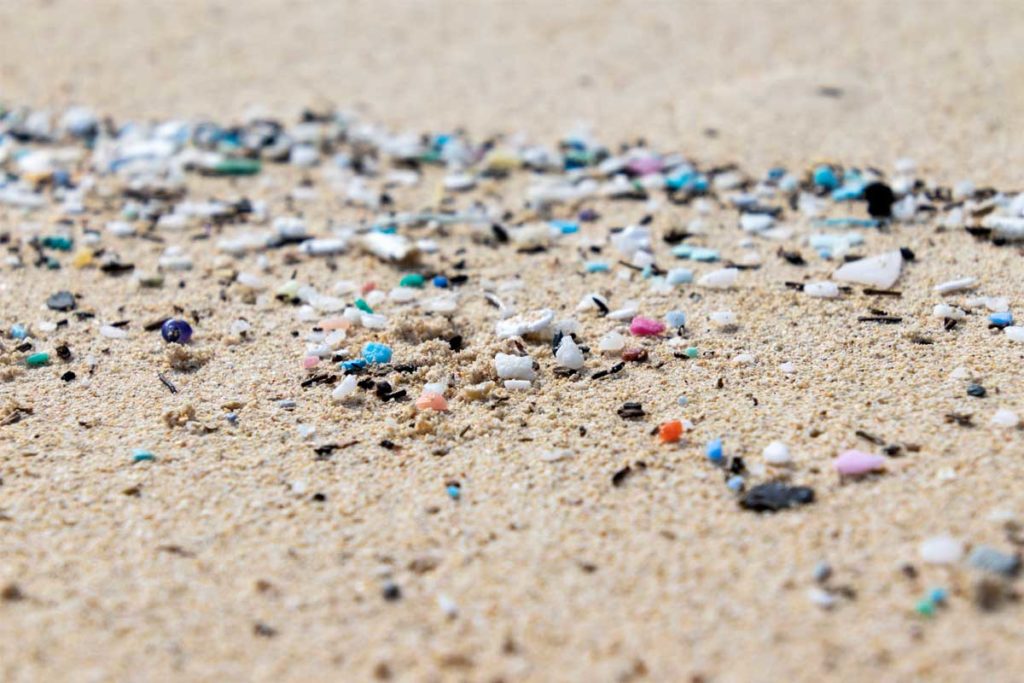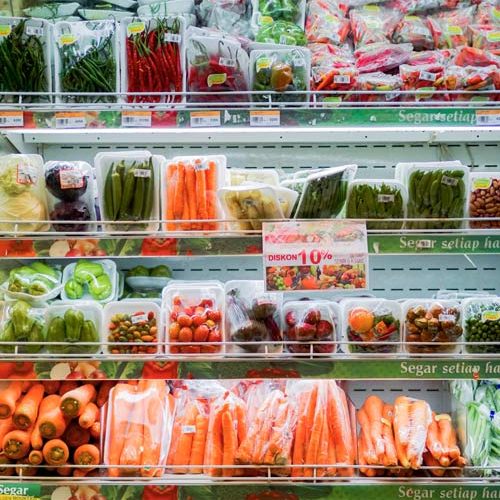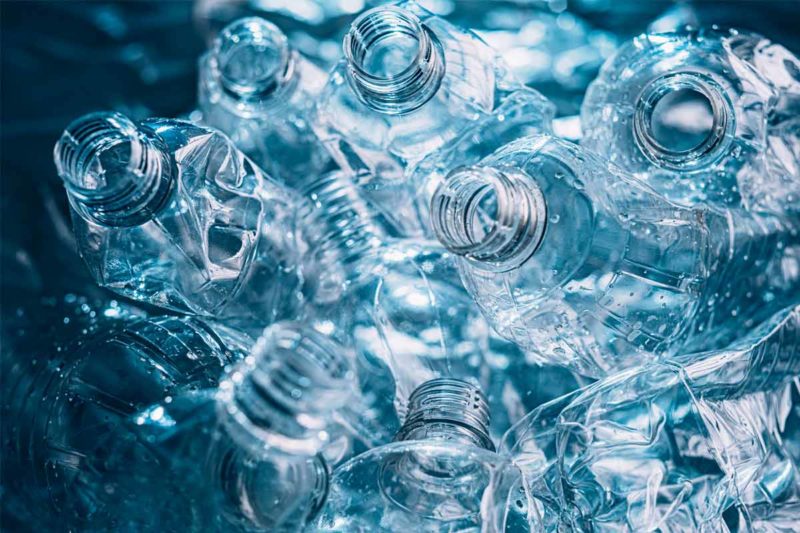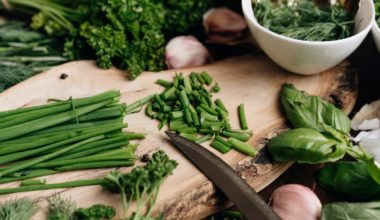Plastic is either fantastic or… Catastrophic! We know that we use too much of it, and that recycling is not able to curb the problem of marine pollution and the health hazards caused by it. There are alternatives and bioplastics, and a great many nuances to consider. Here’s everything you need to know to cut down your use of plastic as much as possible.
What is plastic?
Everyone knows what plastic is… Or thinks they do. In fact, we should talk about “plastics” because there are so many different kinds. Nonetheless, it can be defined as a synthetic material, made from resin and a number of molecules called polymers, which can be manipulated, shaped, reformed, coloured and processed to become an item. This processing with adjuvants and chemical additives, to make it into the desired item, imparts its properties to it: strength, flexibility, transparency etc. There are several main families classed according to their behaviour: flexible, strong elastomers, very hard “thermosets” (such as the melamine in children’s tableware) and thermoplastics that can be heat-treated to take on different shapes.
The history of plastic
From the 20th century onwards, semi-synthetic plastics made from chemically-processed natural polymers gave way to fully-synthetic plastics. Celluloid for tennis balls, viscose for tights, Erinoid for pens and costume jewellery, Bakelite for telephones, then cellophane (the first entirely flexible and transparent plastic) and lastly PVC (a mixture of salt, petroleum and additives) in 1926.
At the time, no-one was worried about the impact that the dazzling success of this versatile new material would have on the planet. It was followed by polystyrene, polyethylene and polyamide, a multi-talented fibre that was said to be thin and strong in equal measure. Then came the first polyurethanes, used as adhesives and foam fillings for mattresses, cushions and car seats.
The 1940s welcomed silicone with open arms, and in the 1950s soaring mass consumption completed the deification of plastic. It was then found in all kinds of everyday items. Melamine and formica muscled their way into kitchens and furniture and we wore clothes made out of polyester, followed by polyamide and Lycra®. Today, plastics are absolutely everywhere…
Les 7 différents types de plastique
- The best known is PET, made from polyethylene terephthalate.
- It is 100% recyclable and loses little of its fundamental properties, so it can be used again and again. However, the material collected in the first place must be extremely pure for it to be recyclable.
- The second is the type of polyethylene known as HDPE.
- It’s a thermoplastic that’s recyclable, not very flexible and opaque, used for liquid laundry detergent containers and milk cartons, for example, and in the medical field.
- The third is the PVC (polyvinyl chloride) that we know so well..
- This type of thermoplastic is soft and flexible, thanks to the addition of phthalates (which are considered endocrine disruptors). It is seldom recyclable, and is what cling film, inflatables and anything that looks like a shower curtain is made of, for example.
- The fourth is a type of polyethylene called LDPE.
- This thin, very commonplace material is derived directly from petroleum and very difficult to recycle. It is used to make plastic bags, sachets to protect items shipped to order and the outer layer of fruit juice cartons, etc.
- The fifth is polypropylene (PP).
- This is the type of plastic used to make yoghurt pots, straws, toys, food tubs, etc. It is often used for food contact because it does not bend out of shape when heated. It is microwave-safe and dishwasher-safe, while the latter is not recommended. Lastly, PP is not easy recyclable.
- The sixth is nasty old polystyrene (PS).
- Directly derived from petroleum, it has a “honeycomb” structure that makes it crumble to bits in the natural environment, toxic substances and all. It is very harmful and rarely gets recycled.
- The seventh is… Well, all the others, actually!
- These include PC (polycarbonate) and PLA (polylactic acid). This is a plant-based type of plastic that is compostable. This means that it will break down in a professional-grade composter at the correct temperature. Left out in the natural environment, it will not break down because it is not biodegradable.
Microplastics and marine pollution

Plastic is a great material, but its pros have turned into (big) cons. Plastic is cheap and strong… But not that strong. So it makes for sturdy items that eventually do break. So you still have to buy new ones at some point, or even on a regular basis. So what’s the problem there? Well, when plastic breaks it gets fragmented and crumbles into ever smaller pieces, which get scattered around without ever disappearing completely. “Bulky” plastic flotsam will break down and get gradually eroded by ultraviolet rays, the heat of the sun, salt water, motion and microorganisms, and then get broken down into ever smaller pieces until it becomes microparticles invisible to the naked eye. Pieces of denser plastic such as PVC sink and settle on the bottom, covering the sea bed with a layer of microplastic. The rest of the waste, a mixture of plastic bags, fishing nets, bottles, synthetic-fabric clothing and polystyrene forms vast areas of microplastic soup. These “plastic continents” that we hear so much about, or “gyres”, are conducive to the development of novel and potentially dangerous bacteria.
But be aware that plastic doesn’t just pollute the sea! It is toxic wherever it ends up. If buried in the ground, it contaminates the soil. If burned along with other rubbish, it gives off toxic gases. The ecological problem is also a public health problem.
Plastic and public health pollution
A WWF study shows that we eat the equivalent of five grams of plastic per week, which is the equivalent of a credit card. Because once plastic has become microplastic, it finds its way into our food chain, including the water we drink if it is of the bottled variety.
While microplastics find their way into our food in this invisible form, they can also do so via storage boxes, ready meal packaging or kitchen utensils which, as they wear out, shed some of their material.
In addition to these micro-fragments, there are additives and other suspected or proven endocrine disruptors that end up in our bellies. Although all plastic items shed potentially dangerous substances, they are not banned. Repetition and frequent use over the years cause them to build up and have consequences on human health. That is why, for example, plastic bottles should not be re-used and refilled as they are not designed to be, and they shed plastic as they wear out.
Why plastic recycling does not go far enough

Recycling is a fundamental part of plastic waste management, but it has limitations that make it an inadequate measure at this time, given the threat to the environment.
The first limitation of recycling is that plastic eventually loses its adaptability over time and cannot be recycled endlessly. The second limitation is that the collection process is complicated, sorting instructions vary around the world from region to region, and in some places there is no recycling scheme at all. While some plastics may be recyclable, they do not always get recycled due to poor profitability. This is the case with cigarette butts, which can be processed very easily but do not get recycled. This applies to other types of packaging too, like that used for mass-produced ham or cured meats. Here, producers do want to switch to PET packaging due to its recyclability, but it does not allow for optimal shelf life. The same goes for items that are too small, such as beauty product tubes like lip balm tubes, and items made from different materials that cannot be separated out on an industrial scale. These will end up being incinerated or go to landfill. Lastly, even if everything is in place for recycling, many people do not do it properly. Yet plastic should be considered a precious material. Because these days, this recycled plastic material has a high marketing value, which should see the value of plastic waste recognised. Unfortunately, some “virgin” plastics are cheaper than recycled plastic, which does not encourage recycling.
Are bioplastics the solution of the future?
Yes… and no! Also called “biosourced” plastics or “bioplastics”, they are made partly or entirely from plant matter – generally maize, potato or cane sugar starch, rather than being derived from hydrocarbons. While they are presented as biodegradable or compostable, it is not that simple. The term “bioplastic”, used as a marketing angle, is a source of confusion. It includes plastics that can be biodegradable without being biosourced, biosourced without being biodegradable, or both biosourced and biodegradable. First of all, if they are partly but not entirely plant-based, that means that when they break down, chemical plastic particles will be shed! Most importantly, these so-called “compostable” plastics are not “biodegradable”. Because for them to disintegrate, they need to be put into a domestic or industrial composter under specific conditions (heat and motion) for the process to be triggered. But who is going to put their shower gel tube or produce bag in a composter? Back in the real world, these plastic items mainly end up in the household rubbish bin… But they are not recyclable! When mixed in with the other waste, they disrupt operations in sorting plants, which are not able to deal with them. So ideally we would need 100% plant-based biodegradable plastics. To clear up the confusion, a new certification had to be developed for plastic that is biodegradable under natural conditions. Called ‘OK Home Compost’, it marks out waste that actually disappears into the natural environment. In summary: there is an urgent need to drastically reduce our use of plastic across the board.
Les 10 plastiques à éviter

- No. 1 Cigarette butts: stop dropping them on the ground, in the street or in the natural environment, otherwise when it rains they will end up in a river…. Put them aside and throw them in a rubbish bin.
- No. 2 Cotton buds, plastic cups and straws: although banned under certain laws, some are still in circulation. Just quit using them, starting right now! Instead, use paper cotton buds or an ear cleaner (oriculi), paper cups, and cardboard or stainless-steel straws made in Europe.
- No. 3 Plastic bags: re-use the ones you still have but don’t accept any more, and always carry a paper or cloth bag with you!
- No. 4 Plastic bottles AND lids: absolutely no more buying bottled water, soft drinks etc. Tap water is generally very good. If not, look out for glass bottles when shopping. Favour cans, or else make your own drinks! If you do buy drinks sometimes, be sure to put the containers in the recycling bin!
- No. 5 Yoghurt and dairy desserts: Bearing in mind that yoghurt pots are not recyclable, switch to those in glass pots, or make your own yoghurt. You can buy (organic) children’s chocolate desserts in portionable format, and also large glass jars of flavoured yoghurt in organic shops.
- No. 6 Clothing made from synthetic fibres: Polyester, nylon, viscose… They are responsible for much of the non-visible pollution that occurs, in the form of microplastics from their fibres. The latter are also shed into the water with each machine wash. Switch to natural materials: linen, cotton, etc.
- No. 7 Shower gels and shampoos: Embrace wall-to-wall solid formats: solid shampoo, coloured and scented soaps, body balm bars, solid toothpaste and deodorant, make-up remover oil bars… These days you can get (almost) everything in solid form!
- No. 8 Food packaging: Boycott the supermarket in favour of small-scale retailers, and head for “zero waste” shops and those selling loose goods.
- No. 9 Chewing gum: Chewing on petroleum is not great… But if you must, be sure to dispose of it in a rubbish bin! There is natural biodegradable chewing gum, too.
- No. 10 Household upkeep aerosols: With vinegar and bicarbonate of soda, you can very easily switch out at least 2-3 consumer products right away. Once you get into the habit of making your own preparations (including laundry detergent and washing-up liquid), it becomes second nature!
Plastic is precious and even irreplaceable in the medical field and in industry. It offers undeniable advantages and has crept into all sectors. But now it’s time to change our habits as consumers. There is an urgent need to take the ubiquity of plastic on board, especially in areas where its lifespan is short, such as small items, packaging and cheap clothes. Consuming less, but better, means boycotting certain products and seeking out those that have managed to do without plastic as much as possible, to put an end to what is now proving to be a real scourge.







